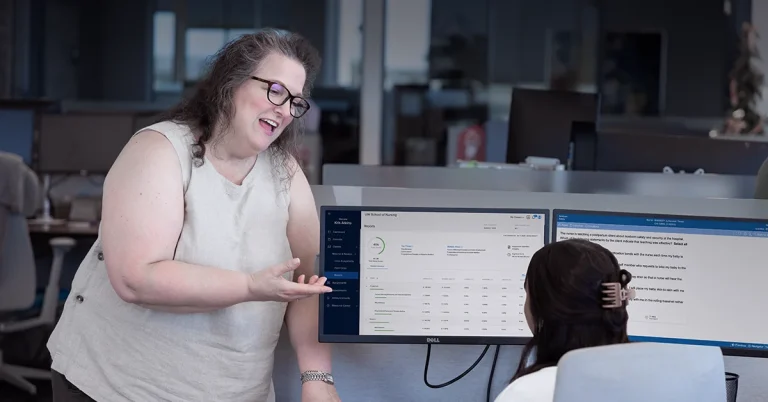The 2021 NCSBN NCLEX Conference was completely virtual this year, but that didn’t detract from the excellence we’ve come to expect each year from this NCLEX conference.
The on-demand sessions, video resources, sample item types, panel discussion, and so much more were enlightening, as they provided those in attendance with Next Generation NCLEX (NGN) NCSBN Clinical Judgment Measurement Model updates and techniques for application in the classroom.
In case you missed this 2021 NCSBN NCLEX event, or if you are still downloading all the information you received, here are three major takeaways from the 2021 NCSBN NCLEX Conference.
Takeaway #1: Same Pass/Fail Decision Rules (no changes)
Similar to previous iterations of the NCLEX exam, the exam will terminate for a candidate when one of three conditions are met:
- The Computer Adaptive Testing (CAT) determines with a 95% confidence interval that the candidate demonstrates competency above or below the passing standard. This can go into effect when the candidate reaches the minimum number of items or at any number after that, up to the maximum number of items. (More on changes in the minimum and maximum number of items in a moment.)
- The candidate runs out of time. The time frame has not changed for the NCLEX exam. Candidates are allotted five hours to complete the exam (including NGN items).
- Candidate takes the maximum number of items on the exam and the algorithm determines that the candidate is competent or not competent.
This is consistent with the pass/fail decision rules in the past; therefore, nursing programs and NCLEX candidates will not have to make test-prep adjustments on this point.
Takeaway #2: Changes in Item Distribution
While there will be no changes in the pass/fail decision rules, there will be some changes in item distribution with NGN. At the 2021 NCSBN NCLEX Conference, this information was announced regarding item distribution:
- Previously, the minimum number of items a candidate would face was 75 items. On the Next Generation NCLEX exam, the minimum number of items a candidate will encounter is 85 items. The breakdown of items is as follows: three scored case studies (six items per case study), 52 scored knowledge items, and 15 unscored (pretest) items.
- The maximum number of items a candidate can face has also changed. On the NGN, the maximum number of items a candidate will encounter is 150. The breakdown of items is as follows: three scored case studies (six items per case study), 117 other scored items (most will be traditional items, but there is a 10% chance for each item that it will be an NGN item), and 15 unscored (pretest) items.
Note: Since bow-ties are always standalone NGN items and are never delivered as part of a case study, the only time a minimum pass candidate will see a bow-tie item is if it is being pretested.
Takeaway #3: Changes in How Some Items Are Scored
Three scoring models were presented at the 2021 NCSBN NCLEX Conference, and we will delve deeper into scoring in the coming months. For now, the most notable change is that NGN is introducing partial scoring for certain items.
Three new item types will be impacted by partial scoring: extended multiple response, matrix multiple choice (Matrix MC), matrix multiple response (Matrix MR). Each of these item types includes all “select all that apply” (SATA) questions.
Partial scoring is obviously something that is new for NCLEX. Previously, the SATA items were scored as either all correct or all incorrect (one point or zero points earned). Now candidates will receive partial credit for a partially correct answer.
In the Next Generation NCLEX Update, the NCSBN identifies two benefits of partial credit scoring:
- “Partial credit scoring allows for more precise measurement and is appropriate to the complexity of the new item types.”
- “Having multiple ways to assign partial credit, such as +/-, reduces impact of random guessing or ‘gaming the items.’”
The NCSBN has been given credit for being transparent with students and educators throughout the development of the Next Generation NCLEX and the 2021 NCSBN NCLEX event was no exception. This new information from the national council — sharing their progress and answering questions — is proving helpful for nursing programs as they prepare for the transition to Next Generation NCLEX in 2023.Next generation NCLEX update – NCSBN. (n.d.). Retrieved October 27, 2021, from https://ncsbn.org/2021_MYM_pdickison_NGN.pdf.





